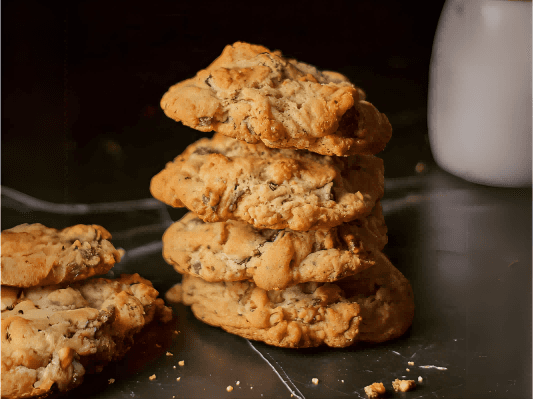Ammonium Bicarbonate Buying Guide-FAQs about buying Ammonium Bicarbonate
There are so many chemical compounds out there – it’s enough to make you overwhelm! When you go to buy something like ammonium bicarbonate, things can get confusing really fast. You probably have a ton of questions roaming around your head.
Is this stuff safe to use? Could it maybe cause cancer? Can I eat it?
It’s okay to feel lost but take a deep breath – We’re here to help you guide through everything you need to know about ammonium bicarbonate.
Our goal is to break down the key details into easy-to-digest pieces. By the end, you’ll be a certified expert ready to make smart, informed choices next time you’re looking to purchase. Together, we’ll get crystal clear on what exactly ammonium bicarbonate is used for, whether it poses any health risks, and how it stacks up against similar options on the market.
Let’s explore together what is ammonium bicarbonate E503(ii).
Introduction to ammonium bicarbonate
Ammonium bicarbonate (formula NH4HCO3) is mainly used as a bulking and raising agent for baked goods like cookies, chips, and flatbreads. It’s made up of ammonium and bicarbonate ions structured together.

When you heat it, ammonium bicarbonate breaks down to release carbon dioxide gas, ammonia gas and water vapor. This gas helps expand and fluff up the dough or batter to increase the final volume and texture.
Usually, you’d use 0.5-2% ammonium bicarbonate by weight of the flour. Too much gives an unpleasant ammonia smell. Since ammonium bicarbonate gets unstable in acidic stuff, it works best in the pH range of 8-8.5 for good gas release.
In addition to making things rise, ammonium bicarbonate improves cookie stretchiness and gives a super fine, crispy texture from proteins breaking down. The compound is artificially synthesized by reacting ammonia and carbon dioxide under pressure. It’s generally recognized as safe and approved as a food additive in Europe for certain uses when quality standards are followed.
Is ammonium bicarbonate bad for you?
Used properly, ammonium bicarbonate is typically considered safe to eat. It’s approved for food use in many countries. But there are a few things to keep in mind:
Ammonium bicarbonate smells and tastes like harsh ammonia. The smell fades when baked, but some find it unpleasant.
When heated or dissolved, this chemical can release ammonia gas. Breathing too much irritating ammonia vapor is risky, especially for those with respiratory issues. Be sure to use ammonium bicarbonate only in spaces with good ventilation. The good news is ammonium bicarbonate contains
ammonium and bicarbonate ions, not sodium. So it won’t raise sodium intake or carry sodium-related health concerns.
Does ammonium bicarbonate cause cancer?
Straight up – there’s no proof ammonium bicarbonate causes cancer. Experts think it’s generally pretty safe. Even though there’s no hard evidence connecting this stuff to cancer, it’s always safe to go for recommended levels and rules for any food additives.

Is ammonium bicarbonate baking soda?
Nope, ammonium bicarbonate isn’t the same thing as baking soda. Even though both can make baked goods rise light and fluffy, they’ve got different ingredients and react differently.
Ammonium bicarbonate, also called baker’s ammonia or hartshorn, has the chemical formula NH4HCO3. It’s a white crystalline powder that lets off ammonia gas when you bake with it, helping dough to rise. This gives a quick lift to batters and leaves them airy.
Baking soda is sodium bicarbonate, with the formula NaHCO3. It’s also a white powder but it doesn’t release ammonia. Baking soda needs an acidic ingredient like vinegar or buttermilk to produce carbon dioxide bubbles that make batters and doughs rise.
While both can help baked goods rise, ammonium bicarbonate and baking soda aren’t interchangeable. Always use the specific leavening agent the recipe calls for to get the right result!
Is ammonium bicarbonate vegan?
Yep, ammonium bicarbonate is typically vegan-friendly. This stuff’s just a chemical combo made by industrial methods – no animal part or stuff is included. It’s mainly formed with ammonium ions (NH4+) and bicarbonate ions (HCO3-). In the kitchen, this ingredient helps batter and dough puff up when baked. It makes cakes and breads nice and fluffy.
How to properly store ammonium bicarbonate?
Keep ammonium bicarbonate in sealed containers, in a cool, dry, well-vented spot far from stuff like strong acids or oxidizers that can react badly. Storage below 30°C/86°F prevents it breaking down too fast.
Don’t put it near copper, nickel, zinc or acid either. To limit ammonia gas leaks, try a re-sealable bag inside a second container.
This stuff is sensitive to heat and moisture. Make sure its containers avoid damage. Reseal opened packages carefully and stand them upright so they won’t spill.
What are the common applications of ammonium bicarbonate beyond baking?
Baking isn’t the only place you’ll find ammonium bicarbonate. Some other common ways ammonium bicarbonate gets used are:
For cosmetics like makeup, it works as a stabilizer to make colors stay vibrant. And it plays a role in wine-making too.
You’ll also find it in fire extinguishers and fireworks, where it serves as a “blowing agent.” Moreover, it can be a nutritional supplement for livestock. The minerals it provides help animals grow strong.
So while it does make yummy baked treats, ammonium bicarbonate has a bunch of other uses across industries. It helps stabilize, supplement, and keep things safe in its special way!
How can you test the freshness of ammonium bicarbonate?
Do you want to check if your ammonium bicarbonate is still good to use?
- Add half a teaspoon of it to some hot water. If it starts fizzing right away and releasing carbon dioxide bubbles, then yes, it’s fresh enough!
- Here’s another test – stir half a teaspoon of the powder into a cup of hot water with a little vinegar. If you see a ton of carbon dioxide bubbles form, your ammonium is nice and fresh.
- Fresh ammonium bicarbonate powder should be white with barely any smell. But over time, even in a sealed container, carbon dioxide leaks out, leaving ammonia behind – so the smell will get stronger.
- You can also use near-infrared or Fourier transform infrared spectroscopy to scientifically measure the purity and quality of ammonium bicarbonate samples.
These methods help distinguish it from similar stuff like ammonium carbamate.
How does ammonium bicarbonate stack up to other leaveners?
Ammonium bicarbonate is seen as the granddad of modern baking powder and soda. It has some special qualities that distinguish it from other leaveners.
Unlike baking soda and powder, ammonium bicarbonate doesn’t require an acid or alkaline ingredient to react — it breaks down into ammonia, carbon dioxide and water when heated up with moisture. This makes it especially good for low-moisture baked stuff like crackers and cookies.
In cookies, ammonium bicarbonate raises pH and weakens gluten, giving a more delicate, crispy texture compared to baking soda. It produced the tallest rising biscuits versus yeast, baking powder, baking soda, and potash in one test.
However, ammonium bicarbonate has a strong ammonia smell and shouldn’t go in moist baked goods, since the ammonia won’t bake out. Yeast makes the biggest rise in biscuit volume, then baking powder.
Ammonium bicarbonate ph
Let’s find out the pH of ammonium bicarbonate. Is it acidic or basic?
When this compound dissolves in water, it splits into ammonium ions and bicarbonate ions. The ammonium part adds a slightly acidic quality. But the bicarbonate ions make it a bit alkaline or basic. So ammonium bicarbonate ends up being mildly basic overall.
Exactly how basic depends on a couple things – how concentrated the solution is and how hot it is. But generally, if you dissolved 10% ammonium bicarbonate in water, the pH would be around 7.5-8.5. So a little on the basic side.
The pH can also shift around based on other stuff in the solution or the specific makeup of it. So if you’re working with an ammonium bicarbonate mixture, take a pH reading to know the real value. Don’t rely only on the rough range.
We’ve come to the end of this guide about ammonium bicarbonate! We’ve gone over the safety basics, common uses, and frequently asked questions to equip you with everything you need to use it properly. For those looking to buy high-quality ammonium bicarbonate or other food additives and chemicals, MONDSTAR is a reliable choice. With over 10 years of experience and bases in China, Mondstar has become renowned for its top-notch quality standards that ensure your products are always of highest quality. When you need chemicals you can count on, trust in Mondstar. They have everything taken care of, so you can move forward with total confidence in using ammonium bicarbonate in your projects!
